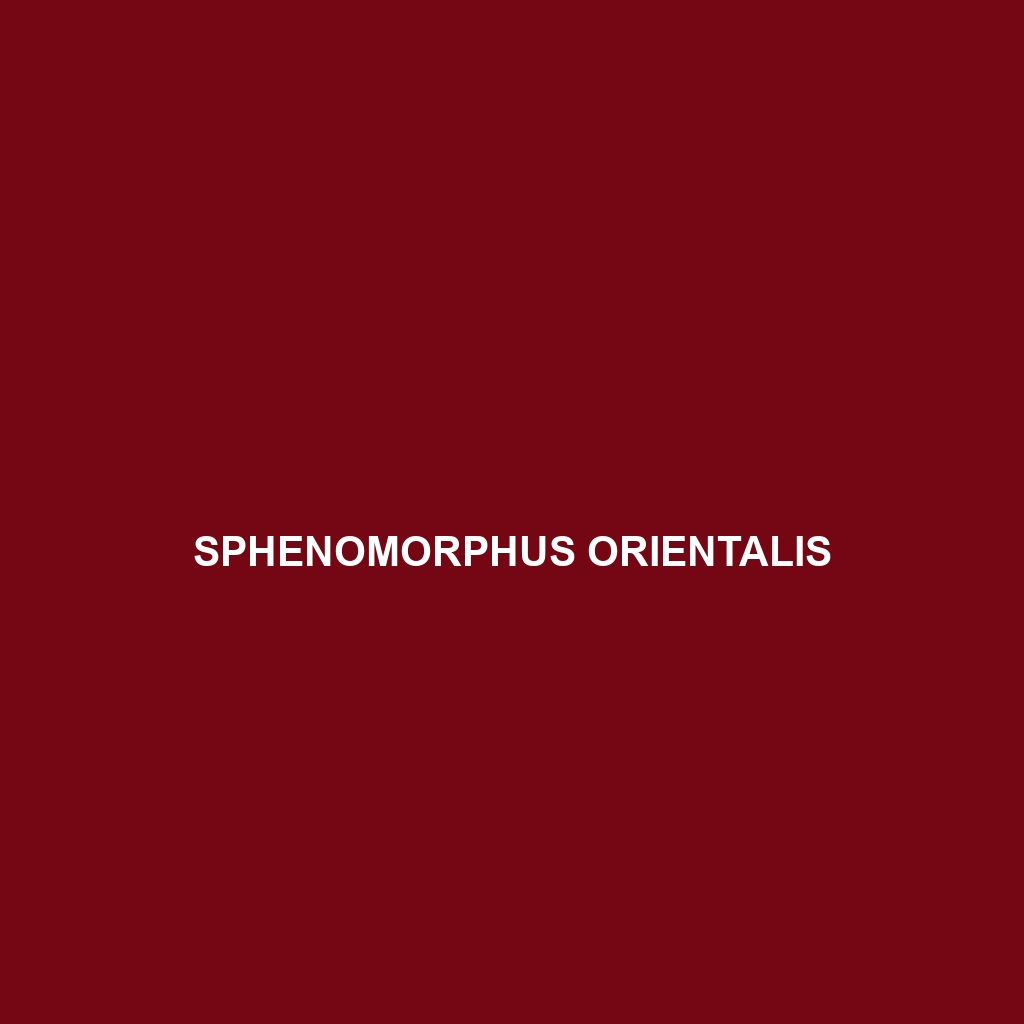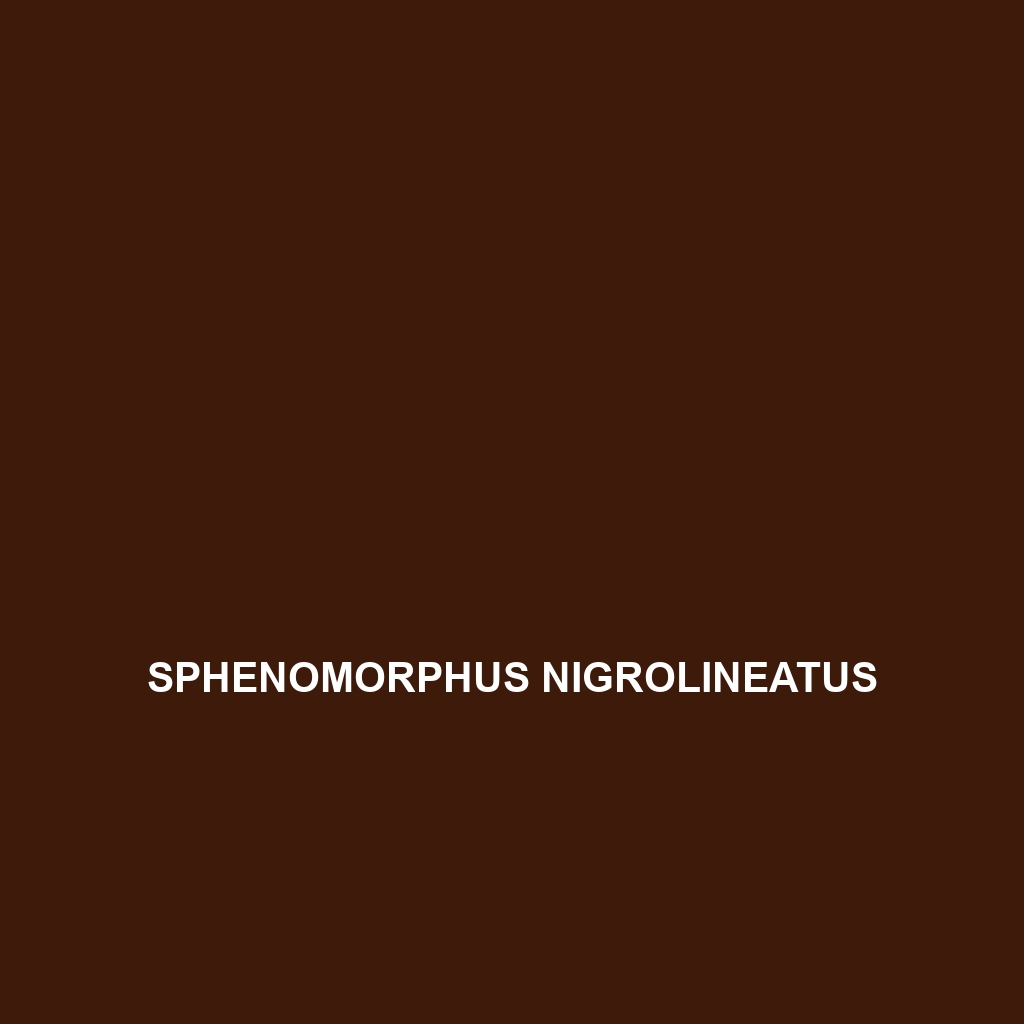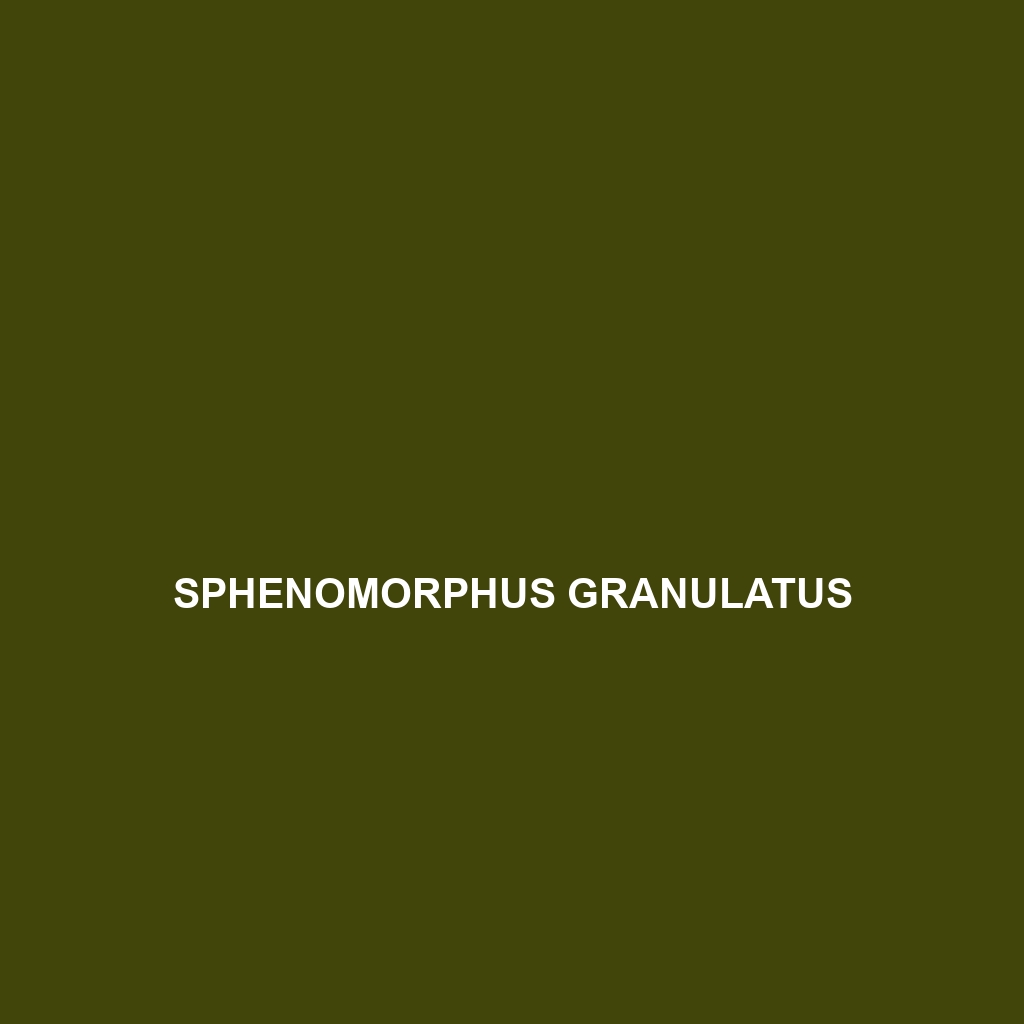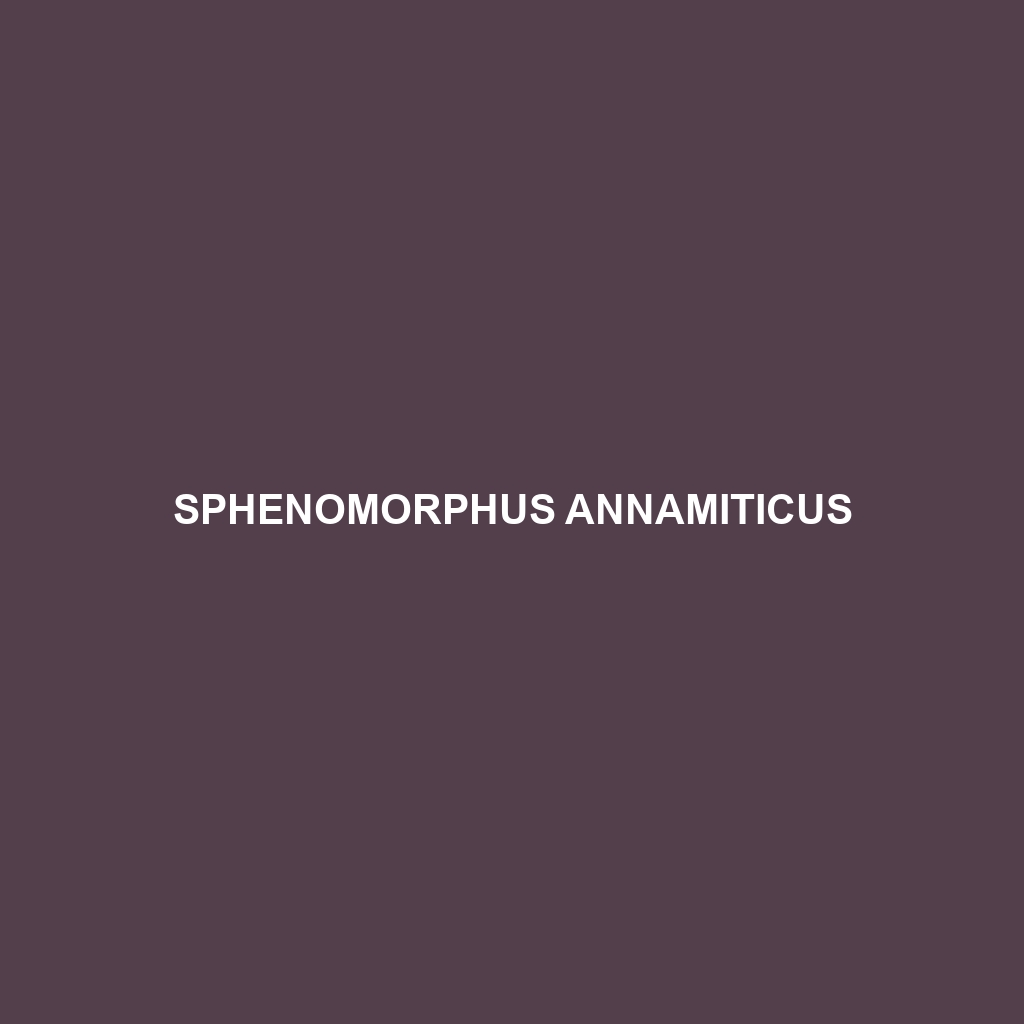<strong>Sphenomorphus orientalis</strong> is a diurnal insectivorous lizard found in Southeast Asia's diverse habitats, including rainforests and savannas. Measuring 20-30 cm, it features smooth scales, a pointed snout, and plays a crucial role in controlling insect populations and supporting ecological balance.
Tag: IUCN Least Concern
Sphenomorphus nigrolineatus
<p>Discover the <b>Black-lined Skink (Sphenomorphus nigrolineatus)</b>, a striking Southeast Asian reptile known for its dark body and vibrant longitudinal stripes. This diurnal insectivore thrives in tropical rainforests, contributing to ecological balance by controlling insect populations while showcasing fascinating behaviors and impressive tail regeneration.</p>
Sphenomorphus nigrolabris
<b>Sphenomorphus nigrolabris</b>, commonly known as the Black-labored Skink, is a slender insectivorous lizard native to the rainforests of Southeast Asia, featuring a distinctive dark coloration with yellow labial scales. Adapted to humid environments, it plays a vital role in pest regulation within its ecosystem while exhibiting unique foraging behaviors and minimal parental care post-hatching.
Sphenomorphus necopinatus
Discover the fascinating Sphenomorphus necopinatus, a vibrant lizard native to Southeast Asia's rich rainforests. Known for its sleek, elongated body and distinctive coloration, this insectivorous species plays a vital role in its ecosystem by regulating insect populations and serving as prey for larger predators.
Sphenomorphus murudensis
Murud Skink (Sphenomorphus murudensis): This medium-sized reptile, native to Southeast Asia's tropical rainforests, features a smooth, glossy body with striking coloration and camouflage to thrive in its humid habitat. Primarily diurnal and insectivorous, the Murud skink plays a vital role in regulating insect populations and contributes to the ecosystem's health and biodiversity.
Sphenomorphus malayanus
<p><b>Sphenomorphus malayanus</b>, known as the Malaysian skink, is a modestly sized lizard measuring 6 to 8 inches with smooth, shiny scales and a vibrant mix of greens and browns. Found in tropical rainforests and savannas of Peninsular Malaysia, it plays a crucial role in controlling insect populations while showcasing fascinating behaviors and a unique ability to camouflage in its natural habitat.</p>
Sphenomorphus indicus
The Indian skink (<i>Sphenomorphus indicus</i>) is a medium-sized lizard ranging from 15 to 30 cm, known for its slender body, smooth scales, and impressive camouflage abilities. Found in diverse habitats across Southeast Asia and the Indian subcontinent, it plays a crucial ecological role as an insectivore and contributes to soil aeration through its burrowing behavior.
Sphenomorphus helenae
<p><b>Sphenomorphus helenae</b>, commonly known as Helena's skink, is a diurnal omnivore found in the humid lowland rainforests of Southeast Asia. With an elongated, streamlined body measuring 20-25 cm, it exhibits stunning dark brown to greenish hues with lighter stripes, playing a crucial role in regulating insect populations within its ecosystem.</p>
Sphenomorphus granulatus
Granulated Skink (Sphenomorphus granulatus): This slender, diurnal skink thrives in humid tropical and temperate forests of Southeast Asia, featuring a distinctive granular skin texture and a diet primarily of insects. With a notable ability to mimic dangerous snakes and regenerate its tail, the Granulated Skink plays a crucial role in controlling insect populations and maintaining ecological balance.
Sphenomorphus annamiticus
<p><b>Sphenomorphus annamiticus</b>, commonly known as the Annam skink, is a diurnal insectivore native to Southeast Asia, thriving in humid forests and grasslands. This slender skink measures 12 to 15 cm in length, features smooth, shiny scales for camouflage, and plays a crucial role in maintaining ecosystem balance by controlling insect populations and aiding soil health.</p>









